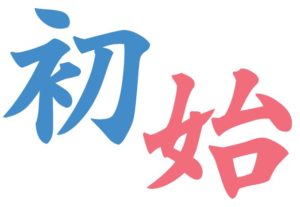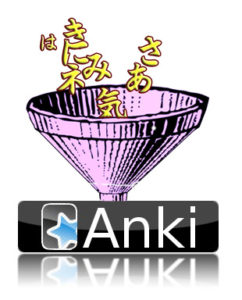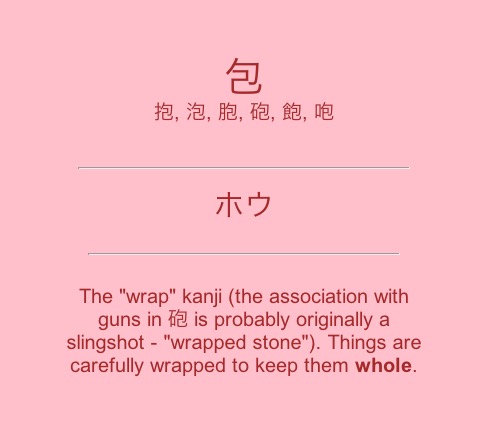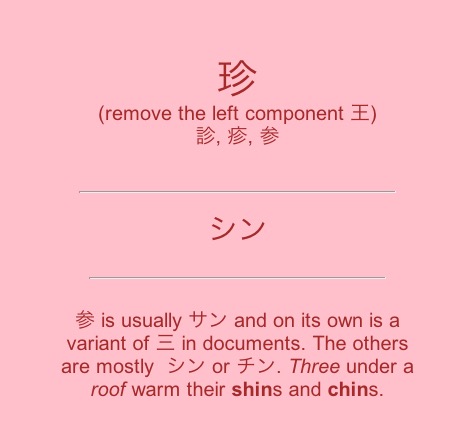 Understanding the question of the grammatical subject in Japanese is absolutely key to understanding the language.
Understanding the question of the grammatical subject in Japanese is absolutely key to understanding the language.
Without that understanding you can muddle through basic Japanese, but as it becomes more complex, you quickly become lost in an incomprehensible fog.
An esteemed correspondent recently told me that she had been told by her teacher that there is no grammatical subject in Japanese.
After replying to her I began to wonder if this idea is at all widespread, and I came upon an article by no less a person than Tae Kim-sensei entitled:
“Repeat after me, there is NO such thing as a subject!”
Kind of forceful, ne?
I have great respect for Tae Kim-sensei and recommend his excellent site, but I have to say that this is the kind of idea that ties people’s minds into knots over Japanese and makes it almost impossible for them to progress beyond a certain point in the language.
Tae Kim-sensei gives an example concerned with wanting to eat crepe. I won’t reply to that directly here, because I think I have dealt in detail with this exact point (the way the “object of desire” can be the subject in Japanese – and the way this is misinterpreted from an English-language perspective) in this video. Please watch it if you are in any doubt (it plays from just before the place that makes this particular point).
https://www.youtube.com/watch?v=/vk3aKqMQwhM?start=127
【If you have any trouble with my android voice, turn on the subtitles from the cogwheel】
Tae Kim-sensei’s statement is not in any way foolish. In fact it is very logical. If you accept the premise of the regular Japanese textbooks (the reasoning that leads people to say that koohii ga suki desu is saying “I like coffee”) then logically you have to follow Tae Kim-sensei’s reasoning. He is in fact far more logical than the standard textbooks, which tell you that ga “usually” marks the grammatical subject – an argument that is not logically sustainable. Tae Kim-sensei takes the implications of “I like coffee” and “I want to eat crepes” to their logical conclusion, which the textbooks fail to do.
But unfortunately it is their basic premise that is wrong, and taking it to its logical conclusion only extends the error.
The irony of the contention that there is no grammatical subject in Japanese is that while it proposes that Japanese is so different from Western languages that it doesn’t have that basic linguistic component, in fact the illusion that it doesn’t comes from treating Japanese too much like a Western language.
The root problem is the assumption that the grammatical subject in Japanese will work in the same way that it does in English and conform to English prejudices. This is what all the textbooks do and it leads to such illogicalities and contradictions that their version of the “Japanese subject” with its randomly-teleporting ga-marker really is a mirage. But that doesn’t mean that it doesn’t exist. Only that they have misconceived how it works.
Actually I would say that Tae Kim-sensei’s article does not really address the question of whether there is a grammatical subject in Japanese, but only of whether が ga marks the grammatical subject. They are two separate issues, and I wish to consider both. However, let us start with the assertion (which Tae Kim-sensei states but does not attempt to demonstrate) that there is no grammatical subject in Japanese.
This stronger of the two assertions is the most troubling because it really reduces language to absurdity. I think it can be dealt with very briefly.
Is there a grammatical subject in Japanese?
Sue hit Mary
Mary hit Sue
I think we can agree that these two sentences do not have the same meaning.
In the first Sue is the doer, in the second Mary is the doer (ie, the grammatical subject, of which an action is predicated)
スーがメアリーを殴った
Sue ga Mary wo nagutta
Sue hit Mary
スーをメアリーが殴った
Sue wo Mary ga nagutta
Mary hit Sue
And that is it. I rest my case. That is the whole argument.
There is a doer and there is a done-to, and distinguishing between them is vital.
Whether one chooses to use the term “grammatical subject” or not, is a matter of – well, word choice, but the phenomenon clearly exists in any language or we would be reduced to inarticulacy.
NOTE: The markers が and を tell us who is the doer and who is the done-to. Now there is certainly a tendency to put the doer first in Japanese, as there is in English. So the final example sentence above is slightly unusual. But in Japanese the word order has no grammatical effect and putting them either way around is perfectly grammatical. As sentences become more complex, relying on word order (inexact from the start) becomes less and less useful.
But regardless of this there must be a grammatical subject and a predicate – whatever we choose to call them (the Japanese call them 主語 and 述語) – or it would be impossible to argue about who hit whom.
And believe me, Japanese people are perfectly capable of arguing over who hit whom.
Does ga mark the grammatical subject in Japanese?
I believe that grammar, rather than being a set of rules that govern language, is an attempt to describe language, so it is entirely possible that people may model it in different ways at times without necessarily anyone being wrong.
And of course when we use terms like “adjective” and “grammatical subject” we are attempting to impose a foreign grammar on Japanese, which makes it even more uncertain.
However, whether we call it a “grammatical subject” or not, there is always something that is either “doing” or “being” something in every sentence from the most simple to the most complex (other than a few exceptions like exclamatory sentences) – and the rest of the sentence/clause is telling you what it is doing/being and all kinds of circumstances surrounding it (in Western grammar this is termed the predicate).
Now some people may argue that the grammatical subject and the “doer” are not always the same. This is true in English (mainly in passive sentences) but it it is not true in Japanese, where there is no true passive as I explain in detail here. I find it clearer to say “doer” (or manifester). Either way, the notion of “subjectless Japanese” is a very serious barrier to understanding the – very simple and logical – way that Japanese actually works.
Also, with Japanese being much more “adjectival” in structure than European languages, very often a lot of the sentence is lining up to the left of (or above in the more usual vertical text) that “something” and modifying it. So identifying the “something” – the subject – is absolutely vital to understanding what is going on in the sentence.
My correspondent wrote:
At my very basic learning level, my Japanese teacher has explained to me that the ga particle is about introducing another topic, whereas the wa particle is about differentiating a given topic from the rest.
This is essentially what Tae Kim-sensei is also saying.
The が ga particle certainly has the function of introducing a new topic, in that you can’t say は wa for an unknown entity. In that sense (but only in that sense) it is like “a” as opposed to “the”; however, it doesn’t work exactly like a/the because – well, it isn’t a European language. It is a useful model to bear in mind though.
However, introducing a new topic isn’t the only thing が does. That consideration is useful when comparing が ga to は wa. But the comparison of が ga to を wo is far more fundamental.
If we are confused between が ga and は wa we will speak somewhat unnatural-sounding Japanese and miss some of the finer nuances of what we read and hear.
If we are confused between が ga and を wo we will speak nonsense-Japanese and have very little idea of what we are hearing and reading.
So let us look at が ga vs を wo, which is really the very basis of Japanese grammar.
Here is what, were I Tae Kim-sensei, I would ask you to “repeat after me”:
が ga marks the thing doing an action or manifesting a quality (e.g. being red).
を wo marks that which is receiving the action done by the が ga-marked actor.
はwa can “conceal” the が ga-function or the を wo-function (and sometimes に ni or others). And we need to know what a は wa-marked topic is actually doing in が ga/を wo terms in order to understand a sentence.
(I know the concept of “concealed particles” may seem unfamiliar, but it is vital to understanding the language correctly, and I walk you through everything step-by-step in this article)
In simple sentences that is often obvious. But it can get much more difficult in more complex sentences if one hasn’t a firm grasp of how it works.
For example, 聞こえる kikoeru can seem ambiguous because, in English terms it can mean both “can hear” and “hearable”. It is not in fact ambiguous because the grammatical markers tell us which it means in a given instance.
So, to take an example used by Cure Tadashiku in her guest chapter of Unlocking Japanese,
鳥が聞こえ
tori ga kikoeru
= the bird is audible / a bird can be heard
鳥を聞こえる
tori wo kikoeru (=watashi ga tori wo kikoeru)
= (I) can hear a bird
Even in English, though it is less common and considered ungrammatical, if someone said “can hear a bird” you would know that meant “I can hear a bird”. In Japanese this construction is natural and grammatical because pronouns can be, and more often than not are, “null”.
が ga marks the doer and を wo marks the done-to (in European terms subject and object). So in the first sentence the bird is doing something/manifesting a quality. It is audible. In the second sentence, the unnamed が ga-marked hearer is doing the action of hearing, and the bird is the object of the action, the thing being-heard.
In the first sentence the grammatical subject is the bird. In the second it is the implicit “I”.
If there is a を wo there must be a corresponding が ga-marked actor, whether it is explicitly named or not.
It is precisely because of this logic that elements of a sentence can be (apparently) “left out” as opposed to being marked by visible placeholders called pronouns.
Japanese is quite complex in certain respects and the difference between は wa and が ga in all its subtlety can take a very long time fully to grasp (just as even fluent Japanese speakers of English sometimes get “a” and “the” wrong – in certain cases they are much more complex than they seem). Fortunately this is a “finer point” and is not a barrier to understanding the language.
However, the difference between が ga and を wo is very simple and is absolutely vital. And it is important in many cases to know whether the non-grammatical particle は is “concealing” a が or a を (or something else).
When I say that は is “non-grammatical”, that is Eurocentric in that I am really saying “does not correspond to anything in European grammar”. A more accurate and helpful term is “non-logical”, as I explain here.
As you have probably guessed my personal leanings are not Eurocentric. I actually do not regard European “scientific culture” as the pinnacle of civilization or the best explanation of the nature of being. But as a tool, these European forms of analysis can be useful for Japanese learners.
They can also be harmful, as attempting to subject Japanese to European rules can (and often does) distort it and make it less understandable. But I find this analysis of が ga and を wo to be completely consistent and to do no violence at all to Japanese (unlike, say, the concepts of verb vs adjective vs noun which have to be treated with considerable caution even though they can’t be altogether disregarded).
By grasping the subject-object nature of が ga and を wo, and understanding them in ways uncluttered by the often rather different way in which English sometimes understands subject and object, we can get a clear grasp of how Japanese actually works and avoid the muddle and sense of vagueness that besets many learners of Japanese as they progress.
If you take only one thing from this article, take this:
Whatever else it is doing (and it does do other things) が ga, always marks the doer of an action or manifester of a quality. In other words, it always marks what Western Grammar calls the subject, of which an action or a quality is predicated.
If it appears not to, as in Tae Kim-sensei’s crepe example, that is because we are looking at the concept of doing or manifesting a quality in Western terms. By seeing Japanese in Japanese terms, we can unlock its true simplicity, logic and beauty. It is not at all difficult to do, and you can learn how to in one evening from Unlocking Japanese, and simplify Japanese for the rest of your life!
 There are a number of words in Japanese that have the same pronunciation and roughly the same meaning but can be written with two or more different kanji.
There are a number of words in Japanese that have the same pronunciation and roughly the same meaning but can be written with two or more different kanji. 初 – Cloak ‘n’ Dagger at the Beginning of Time
初 – Cloak ‘n’ Dagger at the Beginning of Time 始 – The Lady on the Pedestal, Starting to Act
始 – The Lady on the Pedestal, Starting to Act


 Click to enlarge
Click to enlarge Click to enlarge
Click to enlarge





